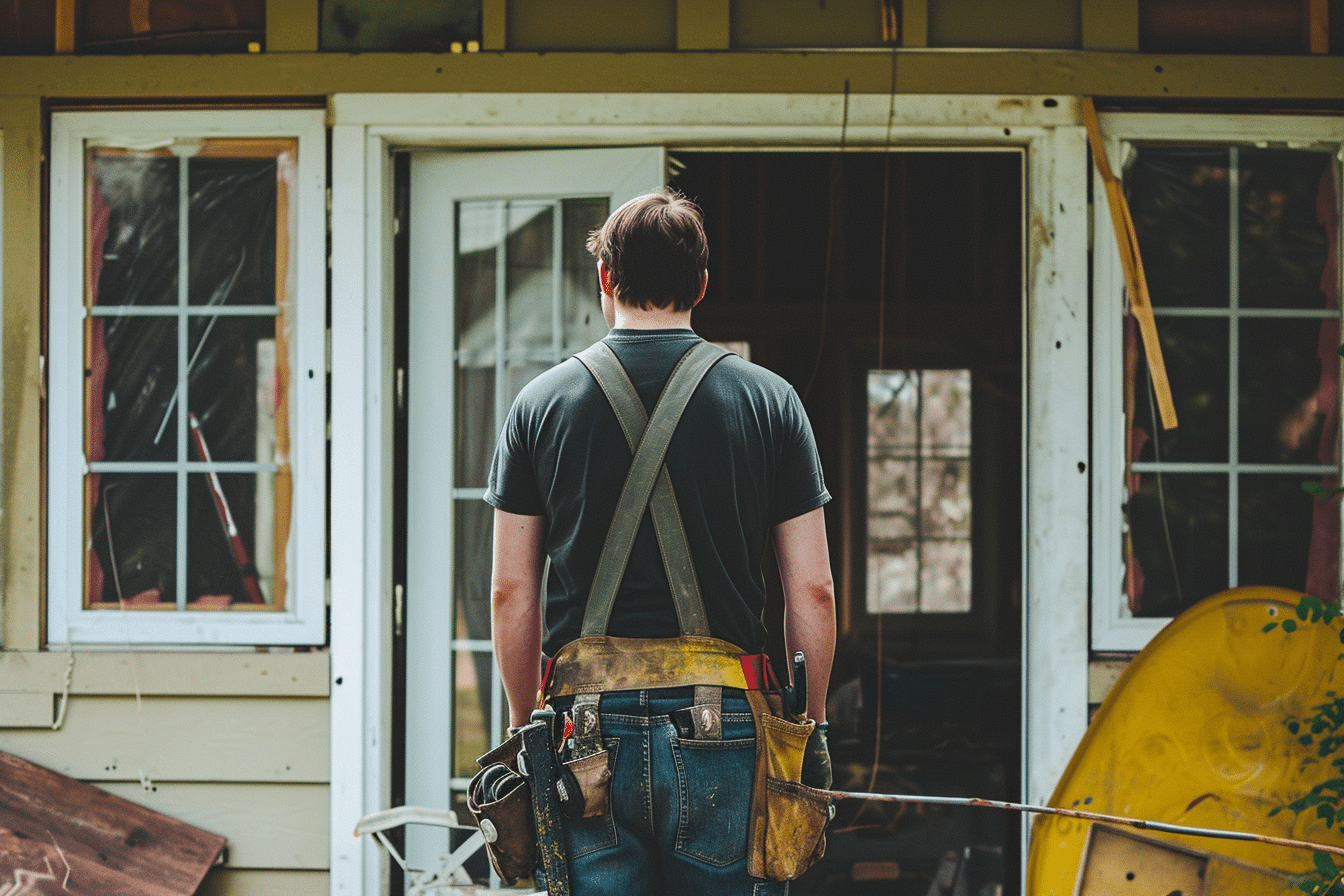
Home Repair Guide: Quick Tips for Easy Fix-ups
Owning a home is an exciting and rewarding experience, but it also comes with the responsibility of maintaining the property. A home repair guide can be an indispensable tool, providing homeowners with the knowledge and skills needed to tackle a variety of projects – from simple maintenance tasks to more involved repairs and upgrades. By arming yourself with a solid understanding of your home’s systems and components, you can prioritize projects and effectively address potential issues before they become costly problems.
Before embarking on any home repair project, it’s essential to assess the specific needs of your home and develop a plan of action. This may include determining which tasks can be handled as DIY projects and which should be delegated to professionals. Regular interior and exterior maintenance, as well as system upgrades and repairs, are crucial to preserving the value and functionality of your home.
When considering home improvements, homeowners often look for remodeling strategies that not only enhance the appearance of their property but also improve its overall functionality. Outdoor and landscape work can also play a significant role in boosting your home’s curb appeal and providing you with beautiful, relaxing spaces to enjoy.
Key Takeaways from Home Repair Guide
- Home repair guides provide valuable knowledge and skills for maintaining properties
- Assessing needs, creating a plan, and deciding between DIY and hiring professionals are crucial steps
- Focus on interior and exterior maintenance, system upgrades, and remodeling for improved functionality and aesthetics. Learn basic skills for homeowners
Assessing Home Repair Needs
Identifying Common Issues
Before diving into home repairs, it’s essential to perform a thorough inspection to identify any issues. Start by examining the home’s main systems, such as the heating, ventilation, and air conditioning (HVAC), and assessing the state of the electrical and plumbing systems. Keep an eye out for common problems such as water leaks, faulty wiring, and cracks in walls or foundations. Remember that routine maintenance is key to prevent these issues from becoming severe. A useful resource to help you stay on top of your home maintenance duties is The Ultimate Home Maintenance Checklist for Year-Round Care.
Prioritizing Repairs
Once you’ve identified the necessary repairs, it’s time to prioritize them. Begin by addressing any issues affecting your home’s safety and structural integrity, such as damaged electrical systems or significant plumbing problems. Afterward, focus on repairs related to the home’s exterior, including the roof, gutters, and siding. Finally, tackle interior repairs such as addressing mold, fixing drywall, and repairing flooring.
In order to handle these tasks efficiently, create a list of identified issues and arrange them by priority. This approach ensures you take care of the most critical problems first, making your home safe and functional for you and your family.
| Repair Category | Priority |
|-----------------|-------------|
| Safety | 1. Highest |
| Structural | 2. High |
| Exterior | 3. Medium |
| Interior | 4. Lowest |
Planning and Preparation
Creating a Budget
When planning a home repair project, it’s essential to create a budget first. One should research and estimate the costs of materials, tools, and possible labor expenses. Don’t forget to include a buffer in the budget for unexpected or last-minute changes.
| Budget Item | Estimated Cost |
|---|---|
| Materials | $XXX |
| Tools | $XXX |
| Labor (if needed) | $XXX |
| Buffer | $XXX |
| Total | $XXXX |
Tool and Material Checklist
Before starting any home repair work, it’s crucial to have a list of all the necessary tools and materials. A good idea is to search online or consult professionals for guidance regarding the specific project. This way, everything is ready when the work begins.
- Tools:
- Hammer
- Screwdriver
- Tape measure
- Drill
- Level
- Materials:
- Nails or screws
- Wood, drywall, or other materials
- Paint or sealant
Making sure to have all required tools and materials not only makes the repair process smoother but also helps avoid delays in the project. Proper planning and preparation can lead to a successful home repair, so don’t underestimate its importance.
Hiring Professionals
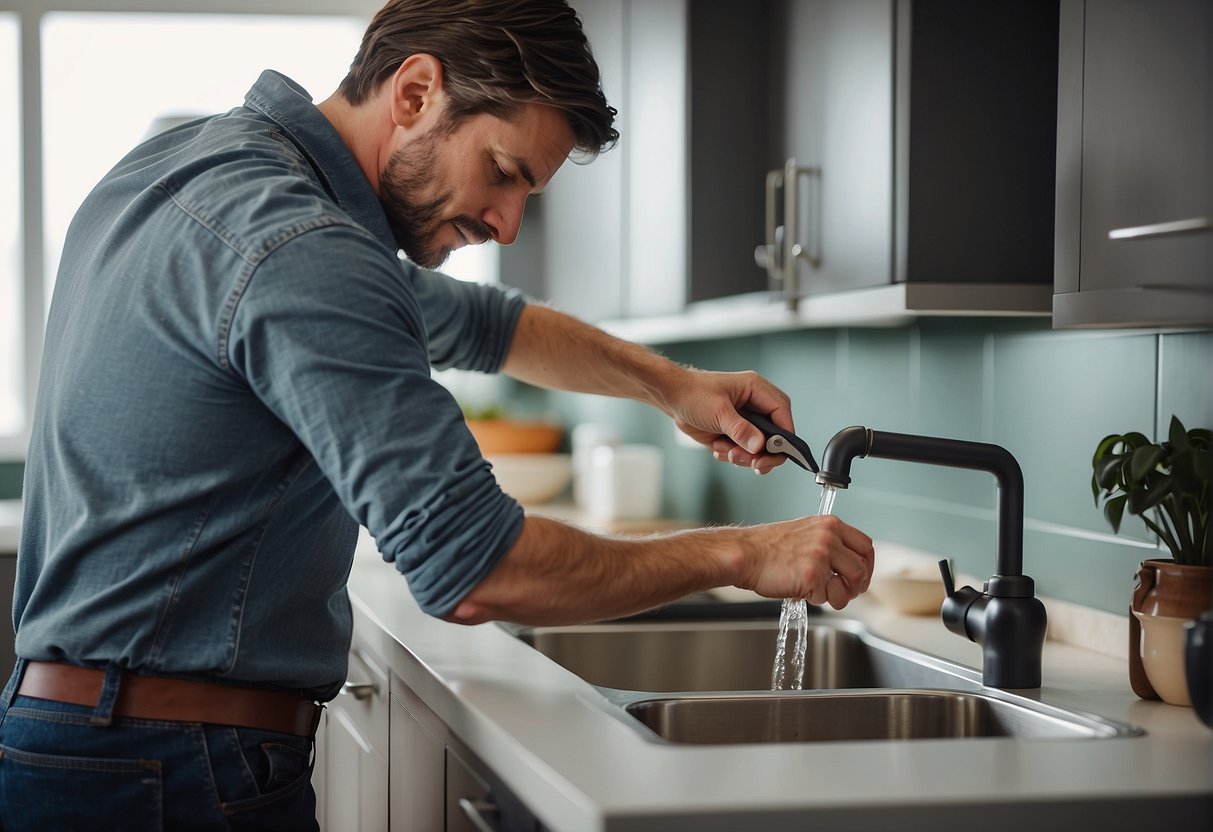
When it comes to home repair, there can be projects that require the expertise of a professional. This section provides guidance on how to make sure you’re hiring the right contractor and understanding the costs associated with their services.
Choosing the Right Contractor
Finding the right contractor for your home repair project can feel like a daunting task. However, it does not have to be. Consider following these steps:
Research: Start by asking for recommendations from friends, family, or even your neighbors. You can also conduct online research on service professionals like HomeAdvisor or Local Pro to find trusted and rated contractors in your area.
Compare: Once you have a list of potential contractors, compare their experience, services offered, and customer reviews. Keep an eye out for red flags, such as a lack of experience or negative feedback from past clients.
Interview: Contact a few contractors for an interview, where you can discuss your project’s details, ask about their experience and expertise, and see if they’re a good fit for your needs.
Check qualifications: Verify that the contractors have the necessary licenses, insurance, and certifications to perform work in your area.
Request quotes: Ask for written quotes from at least three contractors. Make sure the quotes are detailed, so you can easily compare them.
By following these steps, you’ll be well on your way to hiring the perfect service pro for your home repair project.
Understanding Service Costs
Once you have a few quotes from potential contractors, it’s essential to understand the service costs associated with each. Here’s a breakdown of what’s typically included in a contractor’s quote:
Labor: This is the cost for the contractor’s time and effort. It may be based on an hourly rate or a flat fee, depending on the scope of the project.
Materials: The quote should specify the cost of materials needed for your home repair work. Make sure to ask if the materials are included in the quote or if you need to purchase them separately.
Permits: Some home repair projects require permits from local authorities. Find out if the contractor will obtain and pay for permits, or if it’s your responsibility as the homeowner.
Markup: Contractors often add a markup to the overall cost of the project to cover their overhead and profit. This percentage can vary, so it’s essential to ask about markup when comparing quotes.
Here’s an example of how a table can be used to compare quotes from different contractors:
| Contractor | Labor | Materials | Permits | Markup | Total |
|---|---|---|---|---|---|
| Contractor A | $800 | $300 | Y | 15% | $1265 |
| Contractor B | $950 | $340 | N | 10% | $1421 |
| Contractor C | $870 | $270 | Y | 20% | $1368 |
By understanding your contractors’ quotes, service costs, and what’s included, you can select the right pro based on your budget and project requirements.
DIY Repairs
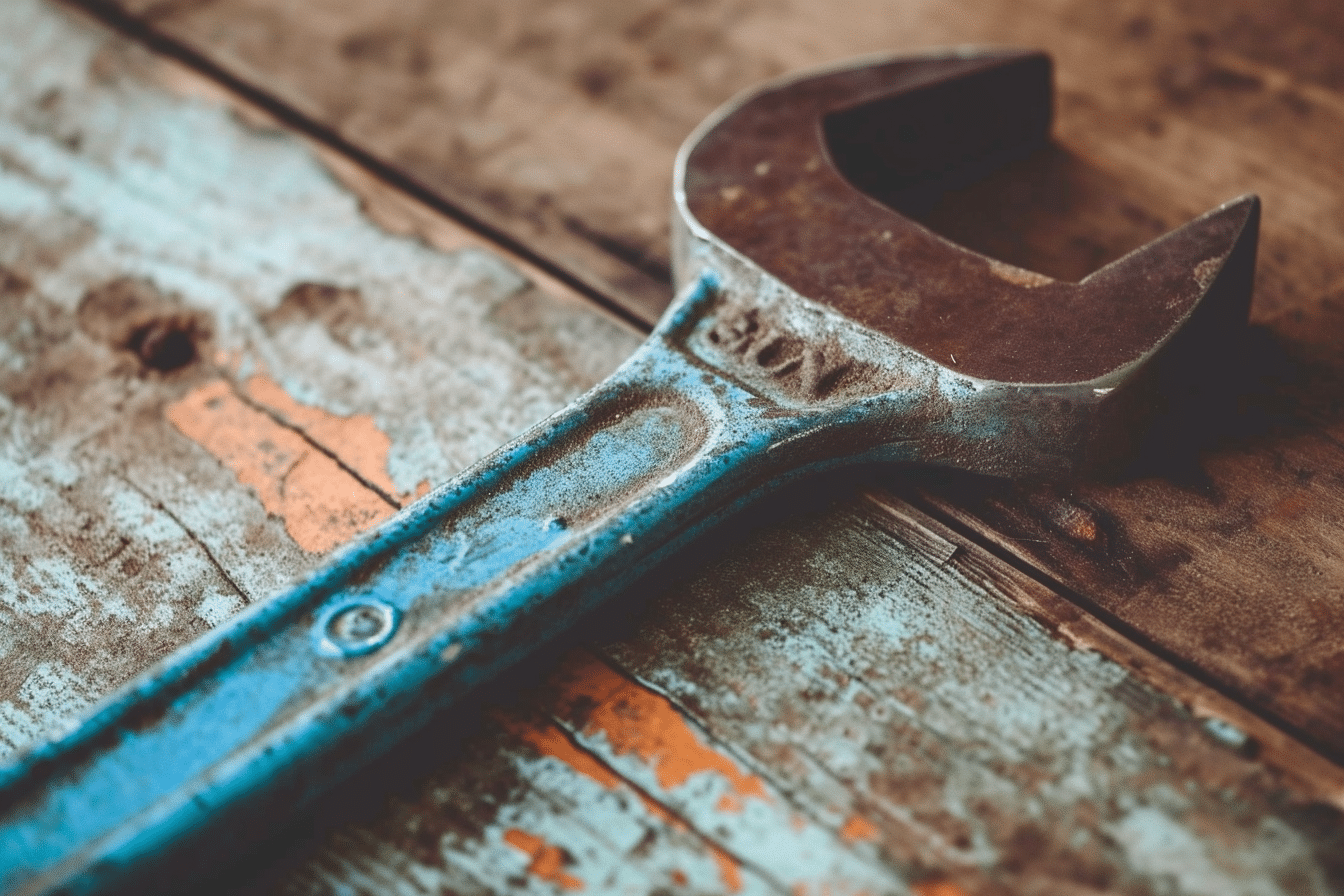
Home repair is an essential skill for any homeowner. With some practice and knowledge, completing DIY repairs can save both time and money, and even become a fulfilling hobby. This section will cover basic fix-it skills as well as some advanced home projects.
Basic Fix-It Skills
Before diving into complicated repairs, it’s important to develop a solid foundation of basic fix-it skills. These skills include handling tools, identifying common household issues, and performing simple repairs. Some essential tools for DIYers include a hammer, screwdriver, wrench, and a tape measure. Gaining a strong understanding of these tools creates a steady foundation for more advanced projects.
Particularly, 100 Home Repairs You Don’t Need to Call a Pro For can give you great insight into simpler tasks which most people can handle, from fixing a leaky faucet to patching a hole in the wall. Additionally, learning how to detect water leaks, replace light bulbs, and maintain appliances are valuable examples of basic fix-it skills.
Advanced Home Projects
Once the foundation of basic repair skills has been achieved, it’s time to tackle advanced home projects. Many advanced home repair tasks might still be manageable on a DIY level, but may require more specialized tools and knowledge. Some examples of such advanced projects include:
- Re-caulking windows and doors
- Replacing a broken windowpane
- Repairing a roof leak
- Installing a ceiling fan
When embracing advanced home repairs, don’t be afraid to ask for help from experienced DIYers or your local family handyman. Learning from others can lead to a more efficient and successful result.
Remember, the key to successful DIY home repairs lies in practicing and learning from mistakes. Advance your skills gradually, and soon enough, you’ll be able to tackle almost any fix-it project in your home.
Interior and Exterior Maintenance

Painting and Siding
Maintaining the interior and exterior paint is essential not only for the aesthetic look but also for protecting your home. For the interior, it’s advisable to repaint the walls every 3-5 years. However, the exterior paint may need to be redone every 5-8 years depending on the type of paint and your location.
When it comes to siding, regular cleaning prevents the buildup of dirt and mold, which can damage the material. Ideally, cleaning your siding can be done at least once a year, using a mix of water and mild detergent. For more stubborn stains, consider using a pressure washer, but be cautious of the water pressure as it can damage the siding.
Roofing and Gutters
Roofing is your home’s primary protector from weather elements. To prevent problems with leaks, water damage, and excessive wear, perform regular inspections on your roof, especially after extreme weather events. These inspections can reveal any potential issues, such as damaged or missing shingles, cracks, and leaks.
| Roof Type | Suggested Inspection Frequency |
|---|---|
| Asphalt | At least every 2 years |
| Tile | At least every 5 years |
| Wood | At least every 3 years |
Of course, roofing inspections may vary depending on the material, age, and environmental factors.
Gutters play a significant role in preventing potential water damage to your home by diverting rainwater. Therefore, regular cleaning and inspection of gutters are crucial. Experts suggest cleaning your gutters at least twice a year, ideally during fall and spring. Ensure there are no clogged downspouts, and that all joints are properly sealed.
Additionally, landscaping elements can affect the overall maintenance of your home. Overgrown trees or bushes may cause damage to your roof, siding and gutters if not properly taken care of. Trim any branches that come into contact with your home to prevent further issues.
System Upgrades and Repairs

When it comes to home repair, there are several key areas that often need attention. This section will provide a brief overview of some essential system upgrades and repairs, focusing on three main categories: Electrical and Lighting, Heating and Cooling, and Plumbing and Water Systems.
Electrical and Lighting
Upgrading and repairing a home’s electrical and lighting systems can make a significant difference in energy efficiency and safety. Here are a few key tasks to consider:
- Rewiring: Old or damaged wiring can pose a fire hazard, so it’s important to inspect your electrical system for any signs of wear or damage.
- Light fixtures: Replacing old light fixtures with modern, energy-efficient models can save money on electricity bills and improve the look of your home.
- Outlets and switches: Installing GFCI (Ground Fault Circuit Interrupter) outlets in appropriate areas can reduce the risk of electrical shock, while updating your switches can enhance both safety and appearance.
Heating and Cooling
Maintaining optimal indoor temperature and air quality is essential for comfort and health. Here are some key components to consider when upgrading or repairing your heating and cooling systems:
- Furnace or boiler: Ensure your heating system is operating efficiently by having it serviced regularly and replacing filters as necessary. Upgrading to a high-efficiency model can also reduce energy consumption and costs.
- Air conditioning: Regular maintenance, such as cleaning or replacing filters, can prolong the life of your air conditioner and improve its performance. Upgrading to an energy-efficient model can further save on electricity costs.
- Insulation: Proper insulation can dramatically improve temperature regulation in your home. Check your attic, walls, and windows for any insulation gaps, and address them as needed.
Plumbing and Water Systems
A functioning plumbing system is crucial for any home. Here are some important repairs and upgrades to keep in mind:
- Pipe repair or replacement: Old, corroded, or damaged pipes can cause leaks and water damage. Inspect your pipes periodically, and repair or replace them as needed.
- Water heater: Insufficient hot water supply or excessively hot water can indicate a problem with your water heater. Regular maintenance and timely repairs can help extend its lifespan, while upgrading to a more efficient model can save on energy costs.
- Fixtures and appliances: Leaky faucets, running toilets, and old appliances (such as washing machines, dishwashers, and water softeners) can waste water and money. Repairing or replacing these items can lead to significant savings and improved performance.
By addressing these critical systems, homeowners can ensure their homes remain safe, comfortable, and efficient. Don’t forget to consult a professional for any repairs or upgrades that require expertise or specialized skills.
Remodeling Strategies
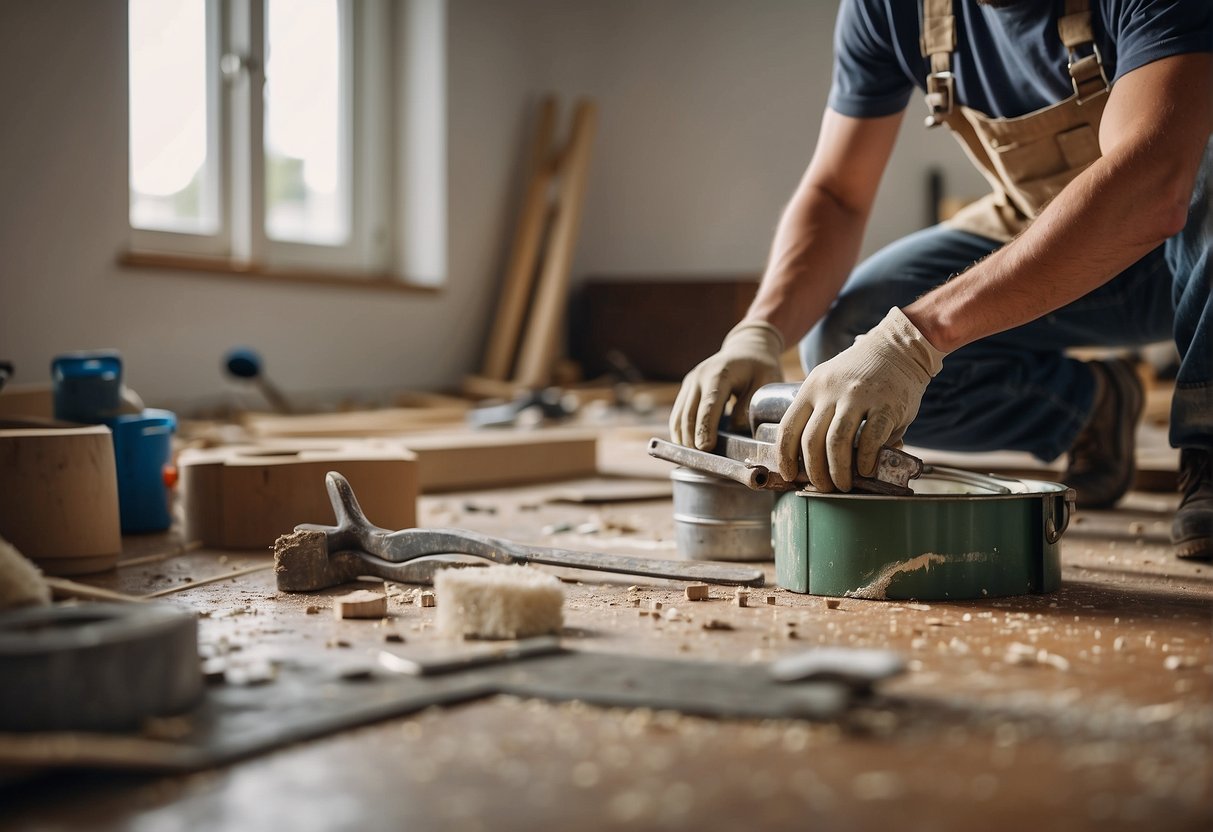
Bathroom and Kitchen Updates
When considering home improvement projects, it’s important to focus on areas that offer the biggest return on investment. Two areas that typically provide the best results are the bathroom and kitchen. Updating these spaces can significantly improve the appearance and functionality of your home.
To create a modern, refreshed feel without breaking the bank, consider the following updates:
- Replace outdated faucets with newer, more stylish designs.
- Swap out your current lighting for energy-efficient LED fixtures.
- Revamp cabinetry with a fresh coat of paint or new hardware.
- Update countertops with a cost-effective material such as laminate or butcher block.
Keep in mind that the average bathroom remodel cost ranges from $5,000 to $15,000, and the kitchen remodel cost can be between $12,000 and $30,000, depending on the extent of the work. Planning and setting a budget can help keep costs under control.
Flooring and Tile Work
The choice of flooring and tile can have a significant impact on the look and feel of your home as well. There are various options available, each with their own set of pros and cons. Here’s a brief summary of some popular options.
| Flooring Type | Advantages | Disadvantages |
|---|---|---|
| Hardwood | Durable and attractive | Can be expensive and needs refinishing over time |
| Laminate | Cost-effective and easy to install | Less natural and may be prone to water damage |
| Tile | Versatile and water-resistant | Cold underfoot and can be slippery |
It’s essential to choose the right type of flooring for each area of your home, and to work with a reliable contractor to ensure proper installation.
When it comes to tiling, consider these tips to enhance your space:
- Choose a tile pattern that suits the size and style of your room.
- Use accent tiles to create a focal point or add visual interest.
- Consider using larger tiles to make a small space feel more open and uncluttered.
Following these remodeling strategies can lead to successful home improvement projects that not only enhance the aesthetics of your living space but also increase its value and functionality.
Outdoor and Landscape Work
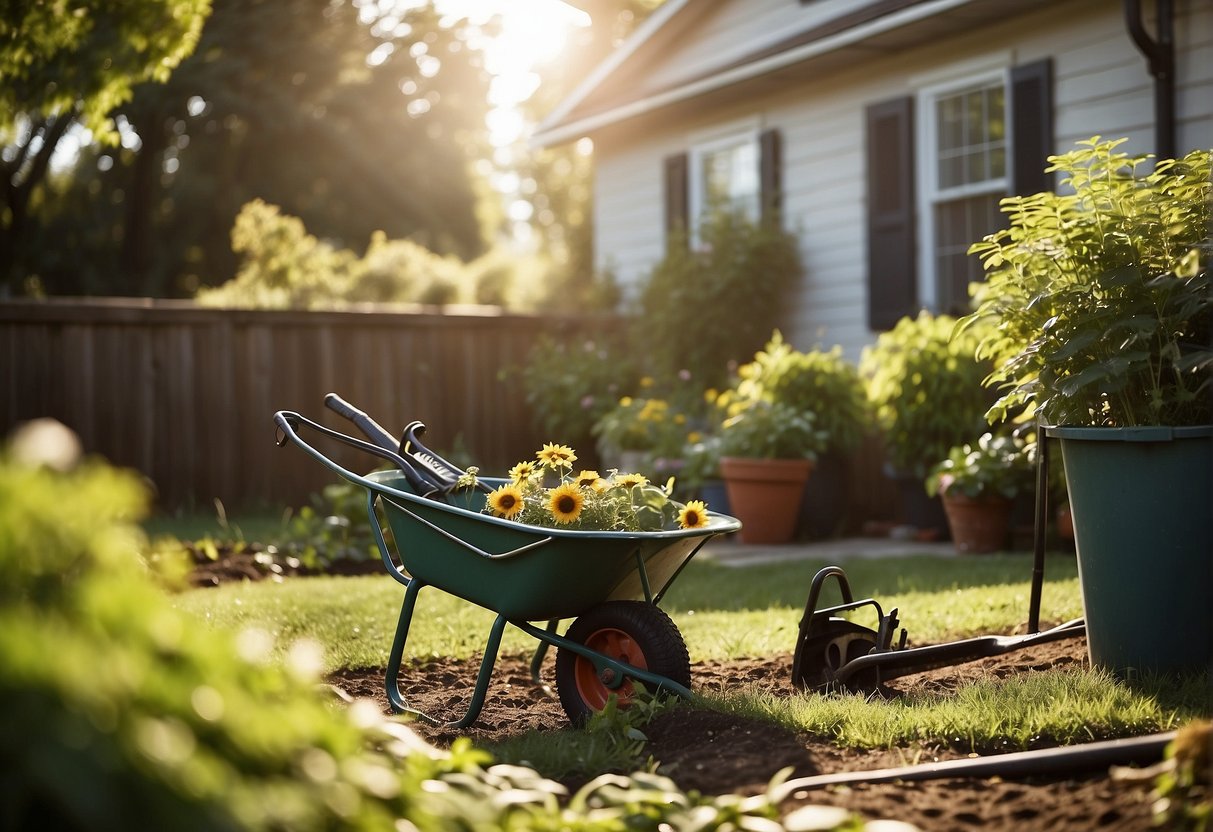
Deck and Patio Construction
Building a deck or patio can be a fantastic way to increase the living space of your home and enjoy the outdoors. Before starting your project, consider factors such as the weather, location, and materials.
For those who prefer a low-maintenance option, consider using composite decking. However, if you enjoy the natural look, then wood decking might be more suitable for you.
Here’s a list of the basic tools you’ll need for constructing a deck or patio:
- Measuring tape
- Circular saw
- Drill and screws
- Hammer
- Level
Remember to follow local building codes and obtain necessary permits before starting construction. Safety should always come first!
Garden and Lawn Care
A well-maintained garden and lawn can do wonders for your home’s curb appeal. To maintain a lush, healthy lawn, follow these simple steps:
- Mow the grass regularly, keeping it at an appropriate height.
- Water your lawn and garden adequately, but avoid overwatering.
- Fertilize your lawn and garden with the right products for your soil type.
- Aerate your lawn to promote healthy root development.
- Rake leaves and debris, as they can block sunlight and encourage pests.
| Type of Plant | Watering Frequency | Fertilization Frequency |
|---|---|---|
| Grass | 1 inch per week | 2-4 times per year |
| Flowers | As needed | Spring and/or Fall |
| Vegetables | 1 inch per week | Once a month |
By properly maintaining your outdoor space, you’ll have a beautiful and inviting landscape to enjoy for years to come.
Luxury Specialist at McGraw Realtors
With a diverse background, including a career as an Air Force fighter pilot and entrepreneurship, Bill transitioned to real estate in 1995. Co-founding Paradigm Realty with his wife, Charlene, he quickly rose to prominence in Oklahoma City’s luxury real estate scene. Now, as one of the top agents with annual sales surpassing $20 million, Bill’s dedication to exceptional service remains unparalleled. With a legacy spanning over two decades in the industry, Bill’s expertise and commitment make him a trusted name in luxury real estate.